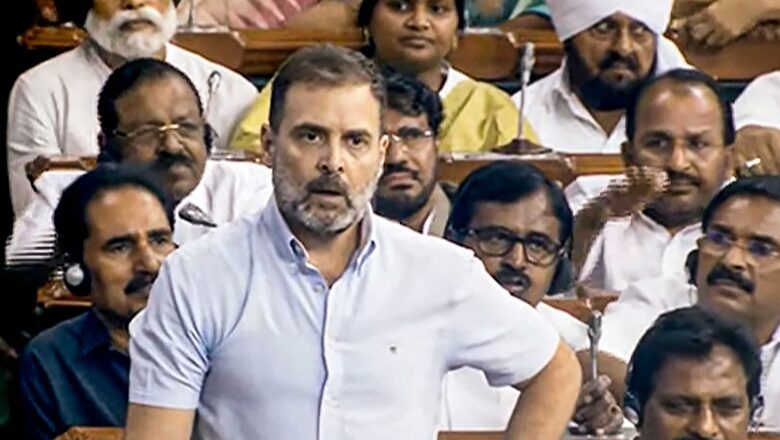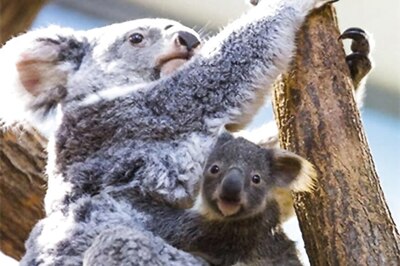
views
In the monsoon session of Parliament, Congress leader Rahul Gandhi evoked the name of ‘Bharat Mata’ to target the ruling party over recent violence in Manipur. Though his remarks were expunged, this incident raises an important question. Does Congress really understand the concept of Bharat Mata, or is it merely political rhetoric?
In this context, it would be pertinent to have a look at the concept of ‘Bharat Mata’ and how it is intrinsically linked to spiritual nationalism that forms the core of Bharat as a nation since the dawn of Hindu civilisation.
Vedic literature explained Bharat’s geography thousands of years ago: ‘Uttaram yat samudrasya, Himadreshchaiv dakshinam, varsham tad bharatam nama, Bharatee yatra santatihi’. (The country that is north of the Sea and south of the Himalayas is known as ‘Bharat’ and its residents are known as ‘Bharatiya’.) So, Bharat as a nation has existed for thousands of years and the rise of nationalism was equated with the love for your motherland here. Another ancient Sanskrit verse from our scriptures said, “Janani Janma Bhoomischa Swargaadapi Gariyasi (Mother that gives birth and motherland are superior even to heaven.)”
Thus, in Hindu civilisation, motherland was always deified as a manifestation of the divine much before the nationalism emerged in the West after the French revolution of 1789. That is why Marxist and Western framework isn’t capable to understand Hindu nationalism and the concept of Bharat Mata. Those political leaders who follow these frameworks are bound to have a flawed understanding of Bharat, Bharat Mata and Hindu nationalism.
In the recent times, it was Bankim Chandra Chatterjee who recreated an imagery of the motherland as a deity i.e. ‘Bharat Mata’, that gave a new impetus to spiritual nationalism from late 19th century onwards.
Despite being a civil servant under the British rule, Bankim Chandra Chatterjee (1838-1894) raised his voice against the foreign rule. His revolutionary work, Anandamath (The Abbey of Bliss), had a significant impact on Bharat’s struggle for independence. The novel was first serialized in a Bengali journal. In 1882, it was published as a book. It became hugely popular in a short time that resulted in its translation in English and major Bharatiya languages. The plot of the novel was set in the backdrop of 18th century Bengal when it was passing through a transitional phase of moving from native to the British rule. The story revolves around the protagonist Mahendra, a landlord devastated by the famine of 1773. Mahendra meets revolutionary ascetics “Santans” (the children of Hindu Dharma) …who were fighting to free their mother, the land that gave birth to them, from the clutches of British exploitation. After meeting them, he dedicates his life to free his motherland from the British rule.
Anandmath personified the nation as mother goddess and advocated renouncement of all material wealth and comforts to make the supreme sacrifice for the Motherland. The song Vande Mataram (I revere thee mother), sung by the revolutionaries in Anandmath became a battle cry for freedom fighters and ‘Bharat Mata ki Jai’ became an integral part of the nation’s socio-cultural milieu. This personification of the nation as ‘Bharat Mata’ also brought to the fore Bharat’s original national identity.
This national identity is deeply rooted in Spiritual nationalism. But the Marxists and the Western academia have deliberately targeted and misleadingly projected this as an aggressive manifestation of Hindu majoritarianism.
Swapan Dasgupta, makes some candid observations in The Awakening of Bharat Mata: The political beliefs of the Indian Right, “The combativeness over Vande Matram, particularly since Independence, is inextricably linked to larger questions of nationhood. For, a start Bankimchandra envisaged India as the mother and then proceeded to define the imagery:
O Mother, thou art love and faith,
it is thy image we raise in every temple.
For thou art Durga holding her ten weapons of war,
Kamala at play in the lotuses
And Speech, the goddess, giver of all lore.
to thee I bow
(Original: Tumi vidya, tumi dharma, Tumi hridi, tumi marma, Tvam hi pranah sharire, Bahute tumi ma shakti, Hridaye tumi ma bhakti, Tomarayi pratima gari mandire mandire”
“Tvam hi Durga dashapraharana dharini, Kamala Kamaladalaviharini, Vani vidyadayini, namami tvam, Namami Kamalam, amalam atulam, Sujalam, suphalam, Mataram )
Subsequently, portraits of the Mother Goddess astride a lion with a map of India as the backdrop was popularised as the personification of Bharat Mata. This portrait of Mother India, inspired by Vande Matram, soon became a central feature of nationalist iconography. There were alternative versions such as Abindranath Tagore’s 1905 painting Bharat Mata that visualised the mother as a saffron-robed sadhvi.”
“Equally robust was the Bengali writer Dwijendralal Roy’s celebration of Bharat Mata:
‘The day you arose from the blue ocean, Mother Bharatvarsha,The world erupted in such a joyful clamour, such devotion, Mother, and so much laughter.’
On his part, Aurobindo left no scope for ambiguity, ‘Nationalism is a religion’, he wrote in 1907, ‘that has come from God’. He was subsequently to equate it with Sanatan Dharma and devotion to the Goddess,” added Dasgupta
Bipin Chandra Pal, a leading light of Bharat’s freedom struggle explained lucidly the concept of ‘Bharat Mata’ in ‘The Soul of India: A constructive study of Indian thoughts and ideals’ (published in 1911). What he wrote 112 years ago, seems to be even more relevant in the contemporary context as the concept of ‘Bharat Mata’ is being evoked in our polity and socio-cultural discourse very frequently. Many of our intellectuals as well as public figures do it without understanding the essence and historical context.
Pal wrote: “The real concept of Mother as applied to India by her children has no metaphor behind it. Of course, most of our modern-educated people use and understand the word in a poetical and metaphorical sense. But this is because their education and environment have more or less completely divorced their thought and imagination from the ancient realities of their language and literature. There are, indeed, numerous words in common use among us to-day, that have entirely lost their original sense, owing to the loss of the genuine thought, unassimilated foreign words and concepts accumulated by our present system of education.”
He continued, “When, for instance, we talk of Dharma we do not understand it to mean either law of being or sacrifices and rituals or duty, the three different senses in which the word was always used among us, but the imported concept of religion. … With the Europeanisation of our mind and modes of thinking even our words have been perceptibly Europeanised. It is not at all surprising, therefore, that the original significance of the word Mother as applied to our country, has also been largely lost to many of our educated countrymen, who see nothing more sacred or serious in it than a very tender and beautiful metaphor.
He added, “It was, however, very different with those who first applied this word to their land. The Mother in what people call the Motherland, was to them not a mere idea or fancy, but a distinct personality. The woman who bore them and nursed them, and brought them up with her own life and substance was no more real a personality in their thought and idea than the land which bore and reared, and gave food and shelter to all their race. But to seize the full truth and reality of this concept you will have to study it in the light of the entire Nature Philosophy of the Hindus.”
The writer, an author and columnist has written several books. He tweets @ArunAnandLive. Views expressed in the above piece are personal and solely that of the author. They do not necessarily reflect News18’s views.




















Comments
0 comment